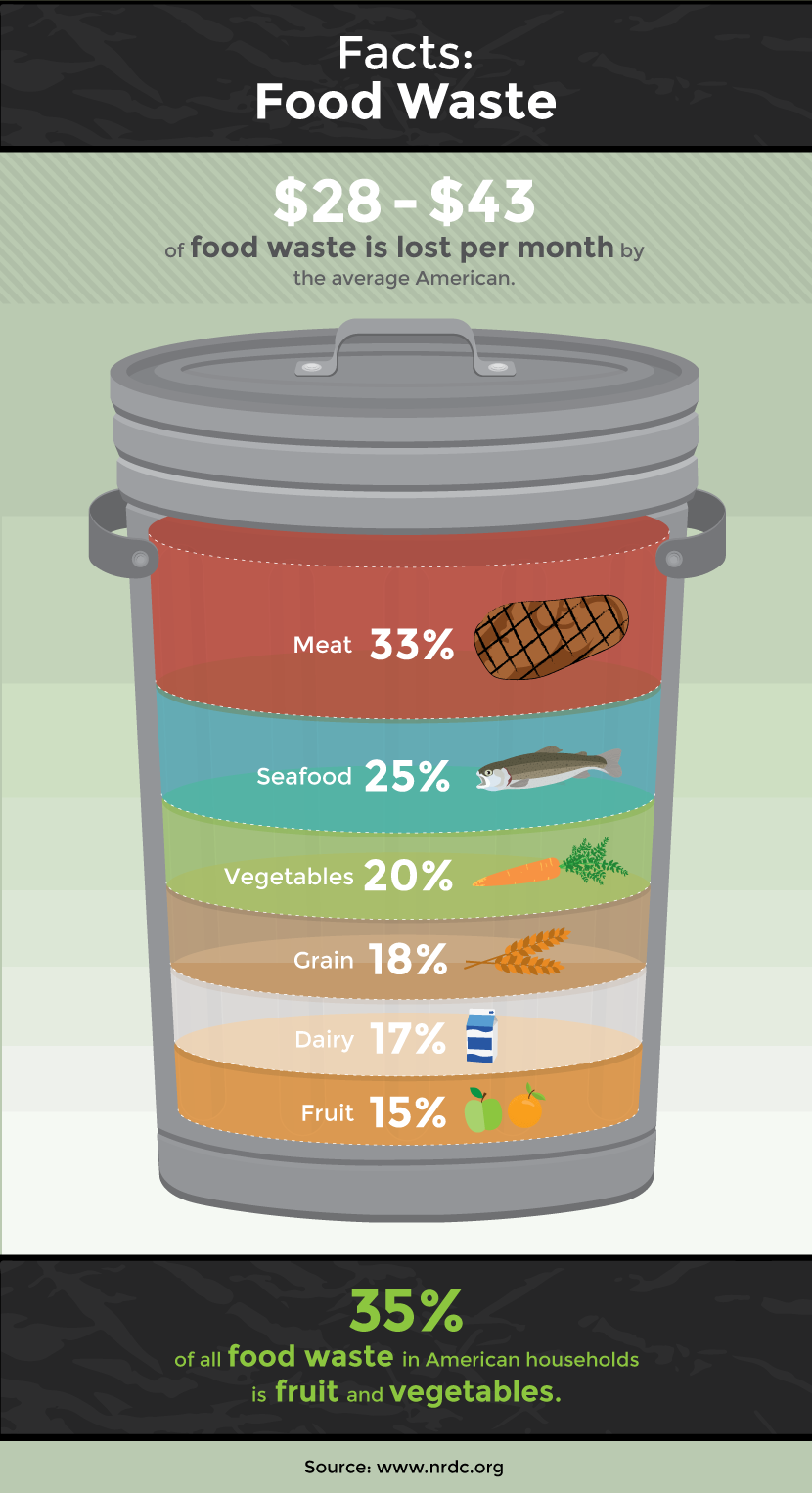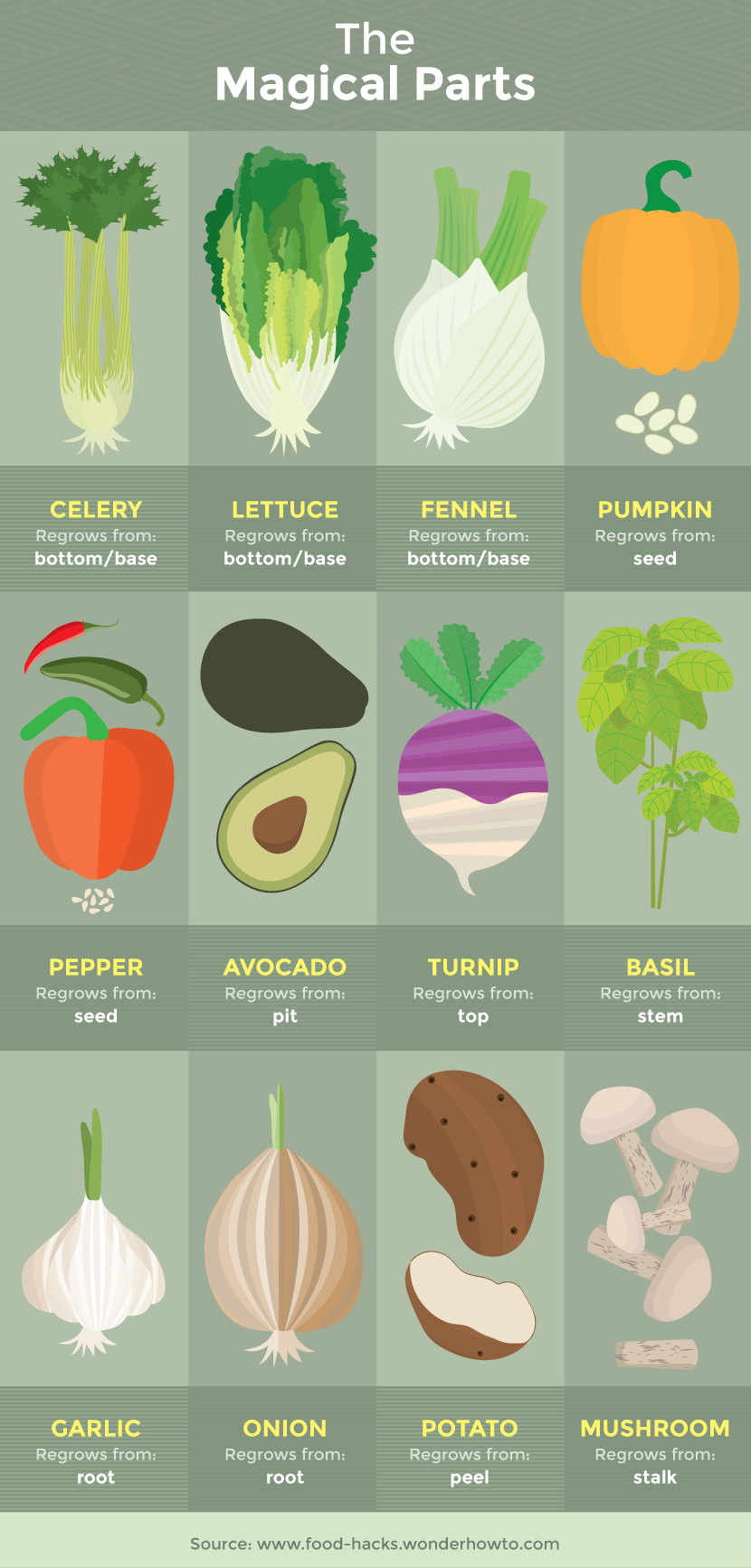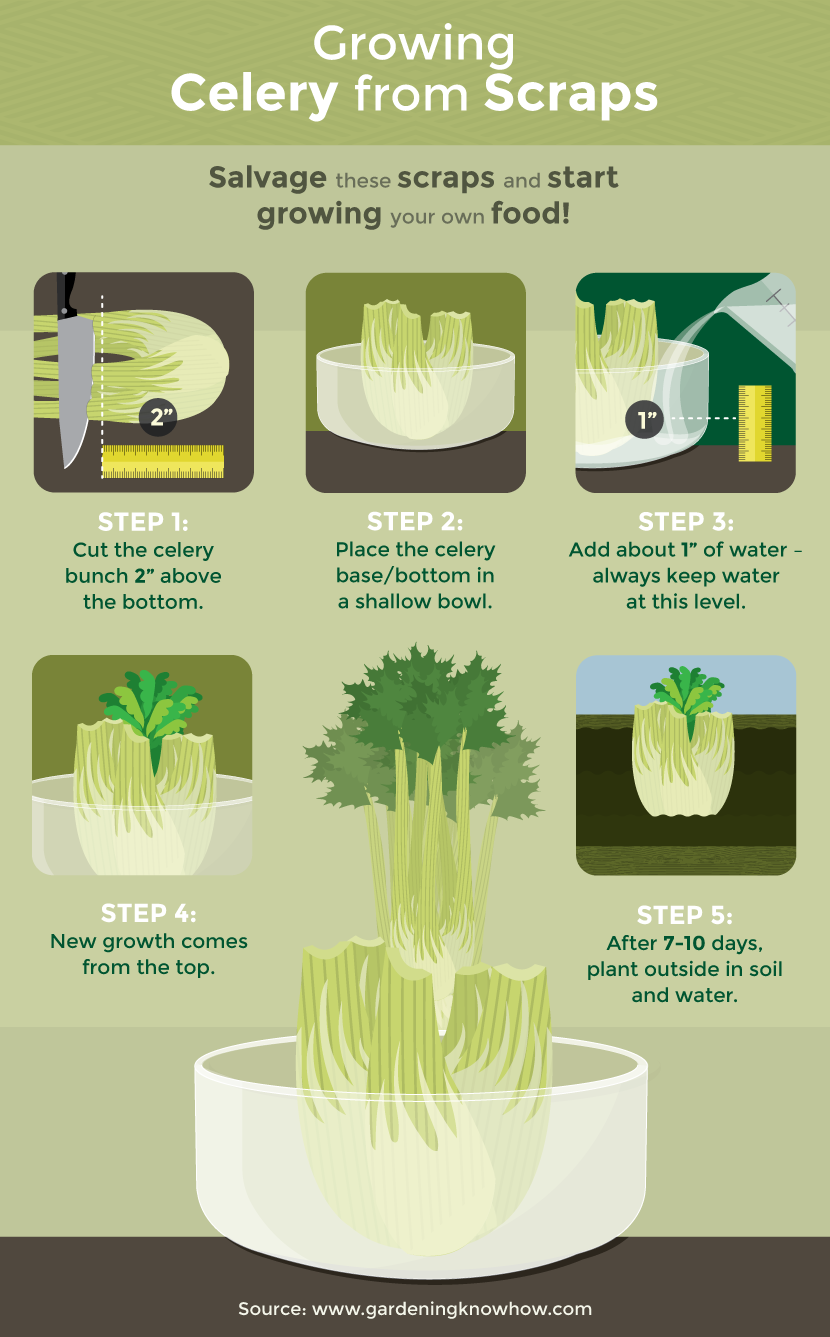From Scraps to the Table
How to Regrow Vegetables From Scraps
Have you ever gone grocery shopping for fresh produce only to check out with sticker shock? Do you then get your produce home only to realize that you aren’t even using what you’re buying each month? You’re not alone. The quest to buy healthy and eat healthy is a goal for countless households, yet many of us wind up wasting both our food and our money in the process. The good news is that there is a simple way to eliminate both problems, and the answer is in your refrigerator in the form of the vegetables you have already purchased.
It turns out that it’s possible to “regrow” many types of produce from the leftover scraps, saving money and food in one fell swoop. And although this might sound like a complicated science fair project, it’s actually incredibly simple to do. Let’s begin with some facts and then move into the why, what, and how.
Food Facts
Whether it’s a result of the recent recession or a growing trend with younger generations, the facts are in: increasing numbers of Americans are growing their own food. In fact, up to 35 percent of US households have edible gardens. We seem to love our veggies, both growing and eating them. Though all this is encouraging, additional statistics are less so, indicating disheartening levels of food waste.

Why Regrow Veggies from Kitchen Scraps?
Aside from not wanting to waste food, there are many reasons to regrow your onions and peppers. Some are pragmatic, whereas others are just plain fun, but no matter how you look at it, it just makes sense.
- Save money: Stop throwing out that $28–$43 a month and put it toward your retirement, college, or vacation fund.
- Teach your kids: If you have children, you’ll be participating in raising a generation of people that is more connected to its food source, understanding where it comes from and how it grows.
- Eat more healthfully: When you purchase organic produce from the grocery store and use it to regrow more at home, you are assured of the quality of the food you eat.
- Have fun: Come on, what’s not to like about this one? Who cares if you’re 42 years old; watching celery grow from a stump is fun!
What Part of the Plant to Regrow
Not every piece of produce regrows from the same part of the plant. From vegetables to fruits, there are a number of plant parts capable of regenerating growth that results in more of the same plant. As such, if celery is your thing, you can’t live without potatoes, or you consider the avocado its own food group, you’re in luck. And if you don’t see your favorite fruit or veggie listed, no worries — a quick Internet search will let you know whether it’s recommended for kumquats, carrots, or cucumbers.

Step by Step
Although there may be some exceptions to the rule, or fine print when it comes to regrowing produce, the basics are often the same. Plants grow a particular way, every time — it’s one of the cool things about Mother Nature.
Bottoms/Base: Using celery as an example; cut the base of the bunch (not an individual stalk) and put it in a bowl with water covering the bottom. Place in a bright window, add water as needed, and soon you’ll see new celery stalks emerging at the top.
Tops: Many veggies that have leafy green tops (carrots, turnips, and the like) can be regrown for the leafy parts. Keep the tops, put them in a bowl with water covering the base of the top, add water as needed, and watch the greens grow. Note: this will not grow new carrots or turnips — rather, it will grow carrot greens and turnip greens to snip and eat.
Roots: Produce such as onions that have an obvious “root” end are easily regrown. Cut off the root end with a sharp knife, 1.5” – 2” above the root. Let it sit for a day or two to callous over, then nestle it root side down into soil. Cover with about 2” of soil and water.
Pit/Seed: This is a wider category of produce, so I recommend doing further research for specific foods that grow from their seeds or pits (tomatoes, peppers, avocado, peach, etc.). For our purposes, let’s use the pumpkin as an example. Extract the pumpkin seeds from your pumpkin, rinse them off, and let them dry on a paper towel. Extract up to three times the amount of seeds you think you might need, as not all will germinate or “sprout.” Plant directly in the soil at the time recommended for your area.
Stem: If you’ve ever rooted a pothos ivy clipping in water, you’ll immediately understand this process. Basil is another one of those plants: Snip a length of the stem (it can have leaves still attached) and pop the stem into a jar of water. Remove any leaves that would be submerged in the water; you only want the stem there. Soon enough, you’ll see roots growing, at which time you can remove the stem from the water and plant in a small pot.
Peel: To be more precise, if you want to grow a potato, you will cut a cube of the potato with the peel on it. Make sure the cube has an “eye” on it — this is the part of the potato that sprouts if you let it sit for too long on your counter top. Let the cubes sit for a day or two, then plant them outside and water as normal.

Tips & Tricks
For the most part, regrowing your produce is a simple endeavor, but here are some additional tips to make this an even better experience:
- Start with good-quality organic produce, as the “parent” scrap helps determine the quality of the regrowth.
- Some produce is more difficult to regrow at home. Carrots are a good example. Carrots, of course, grow from seed, but that seed comes from the green tops as they are being grown — which does not come with the carrot when you buy it.
- Experiment with lettuce — some people feel that lettuce regrown in water doesn’t have the same tasty flavor as lettuce grown in the soil does. Try it and decide for yourself.
- Some gardeners say they have regrown produce many times over from the same “mother” plant with great success, whereas others claim that only the first 3–4 generations are just as tasty. That likely depends on a number of factors, but it’s certainly worth experimenting.
- If you grow your own vegetables from seed and then wish to regrow in the manner described in this article, be aware that some seed companies have patents on their products and might frown on this process. Although it could be an extremely small risk, it’s worth knowing for sure.
Regrowing food from scraps can help you become a part of the solution to the increasingly serious problem of global food waste, while also becoming more self-sustaining and green-thumbed. Take these tips and give it a try today!
Embed the article on your site

